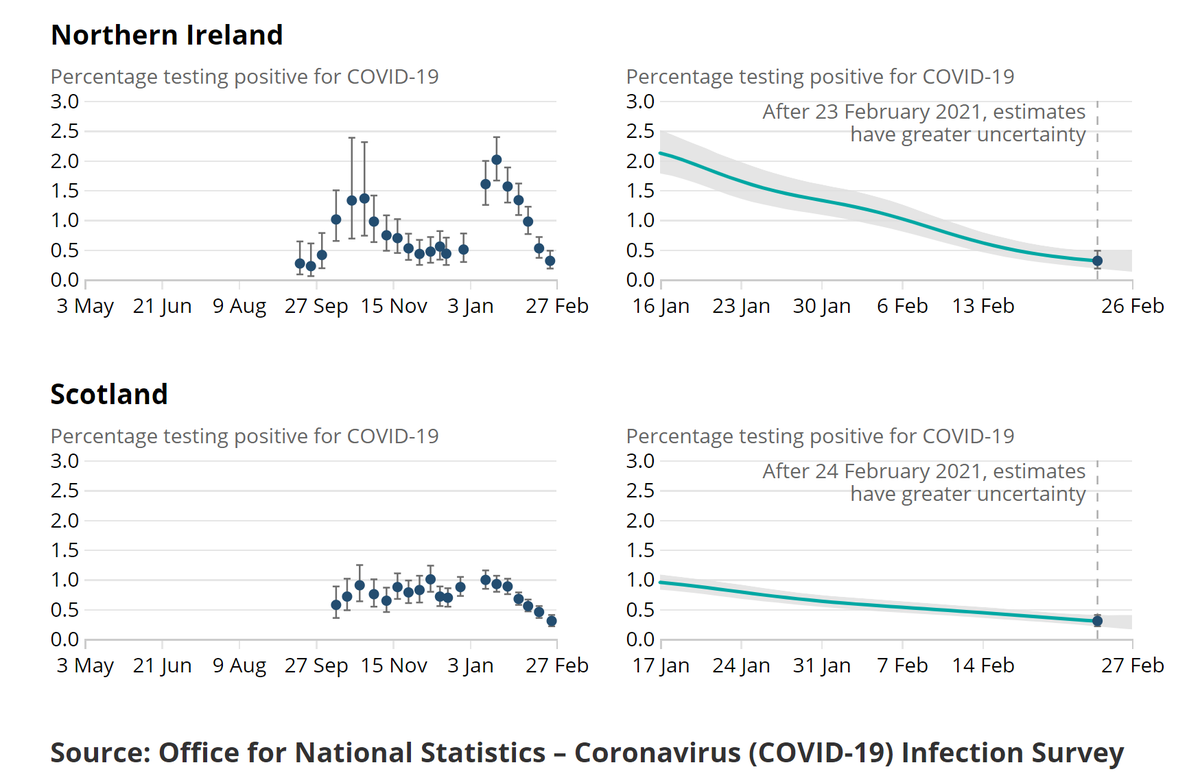
Wed vaccine update:
1st doses: 263k daily, 20.74m total.
2nd doses: 51k daily, 895k total.
1st doses are 20% down on last week, the 7 day total falls to 2.5m.
2nd doses reach a new high since deferred to 12 weeks, and the 7 day total is now 226k.
S/W/NI next...
1/4
1st doses: 263k daily, 20.74m total.
2nd doses: 51k daily, 895k total.
1st doses are 20% down on last week, the 7 day total falls to 2.5m.
2nd doses reach a new high since deferred to 12 weeks, and the 7 day total is now 226k.
S/W/NI next...
1/4

Scotland's dashboard now has some neat graphs, which show the total's vaccinated of each age-group, both in total, and with a build up over time.
A clear visual presentation, and great take-up rates too!
2/4

A clear visual presentation, and great take-up rates too!
2/4


Meanwhile Wales has restated its take-up rates to exclude from the denominators those who have recently died, thus resulting in them increasing. eg Over 80s was 91.2% two days ago and is now 93.9%. This reduces the % not vaccinated by 30% in this age group.
3/4
3/4

Northern Ireland also now provides information on its take-up by age, courtesy its twitter feed, though not, as far as I am aware, on its dashboard.
4/4
4/4

• • •
Missing some Tweet in this thread? You can try to
force a refresh



















